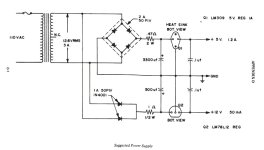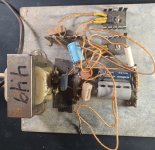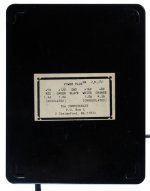So... I feel like I need to be "that guy" here and suggest that maybe, just maaaybe, that maybe this is (mostly) just YouTube comments being YouTube comments.
The Amiga 1000 power supply is a switching power supply essentially the same as a contemporary vintage PC power supply. Switching power supplies like that (almost always)
already have overcurrent protection that'll shut down the supply in the case of a
hard short. This is generally pretty fast acting and will prevent the PSU from fully starting if the short is present on power-on. The problem here is if you have a short somwhere "delicate" (say, a short involving a fine PCB trace), IE, something that will burn through if subjected to less current than the max rating of the PSU (it looks like, for instance, that an Amiga 1000 PSU is rated for 8 amps on the +5v feed), you could potentially smoke a trace. Which sure, might suck if you did it to an antique PCB... but it's a lot less likely to happen with a switching power supply than it would be with the linear power supplies most computers used back in the 1970's.
It protects the device. If you power a rare piece of hardware and have a short, a beefy PSU with no current limit will make sure every chip gets fried.
If you have a system with a short from VCC to ground smoking all the chips probably *isn't* going to be a realistic consequence; the current's going to go through the short, not the chips, and blow *that* up.
The thing a current-limiting supply *isn't* going to save you from is if you make a serious mistake and, say, wire the thing up with the polarity reversed. Some chips can be permanently damaged by even a fairly trivial amount of reverse current. You can go ahead and buy the bench power supply that has a big "max current" knob and think you're being "safe" by just slowly turning that knob up, but if you've wired it up backwards all your pretty white ceramic chips will be likely be goners before you see a lot of fireworks.
Honestly the biggest criticism I'd have of using an Amiga 1000 PSU as your go-to bench power supply is old switching PSUs like that usually don't regulate their output voltage reliably unless they have at least a minimal load on them. Some PSUs don't come up at all, while others might give you the wrong voltage; usually an undervolt, but there's still something of a risk there. I use an old Flex-ATX power supply for my bench work, and even though it's from the early 2000s it still has this problem; the 3.3v supply will not regulate accurately unless there's a significant load on it. I've posted this before but here's the photo again of what I came up with to ballast it enough to work properly:
Yes, that's 16 old incandescent Xmas tree bulbs wired into 8 series pairs.
FWIW, the breakout board with the fuses is something you can find on Amazon for dirt cheap; the fuses add another layer of protection to the ATX supply's built-in short detection. The meter is also an Amazon special (they cost about $10 for five of them) and adds a little bit of extra reassurance that everything is healthy. (I might add meters for every feed if I feel ambitious one of these days.)
Anyway. I'm not saying you *shouldn't* get yourself a nice adjustable current-limiting power supply, but I also think it's fair to point out that having it isn't actually going to keep you from frying an old computer if you make a mistake. And, in fact, I might actually make the case that if it's a PSU that has a confusing interface with multi-modal buttons and knobs it could potentially give you more land mines to step on. It'd kind of suck, for instance, if you accidentally turned up the voltage while intending to up the current limiter when powering something up for the first time...




